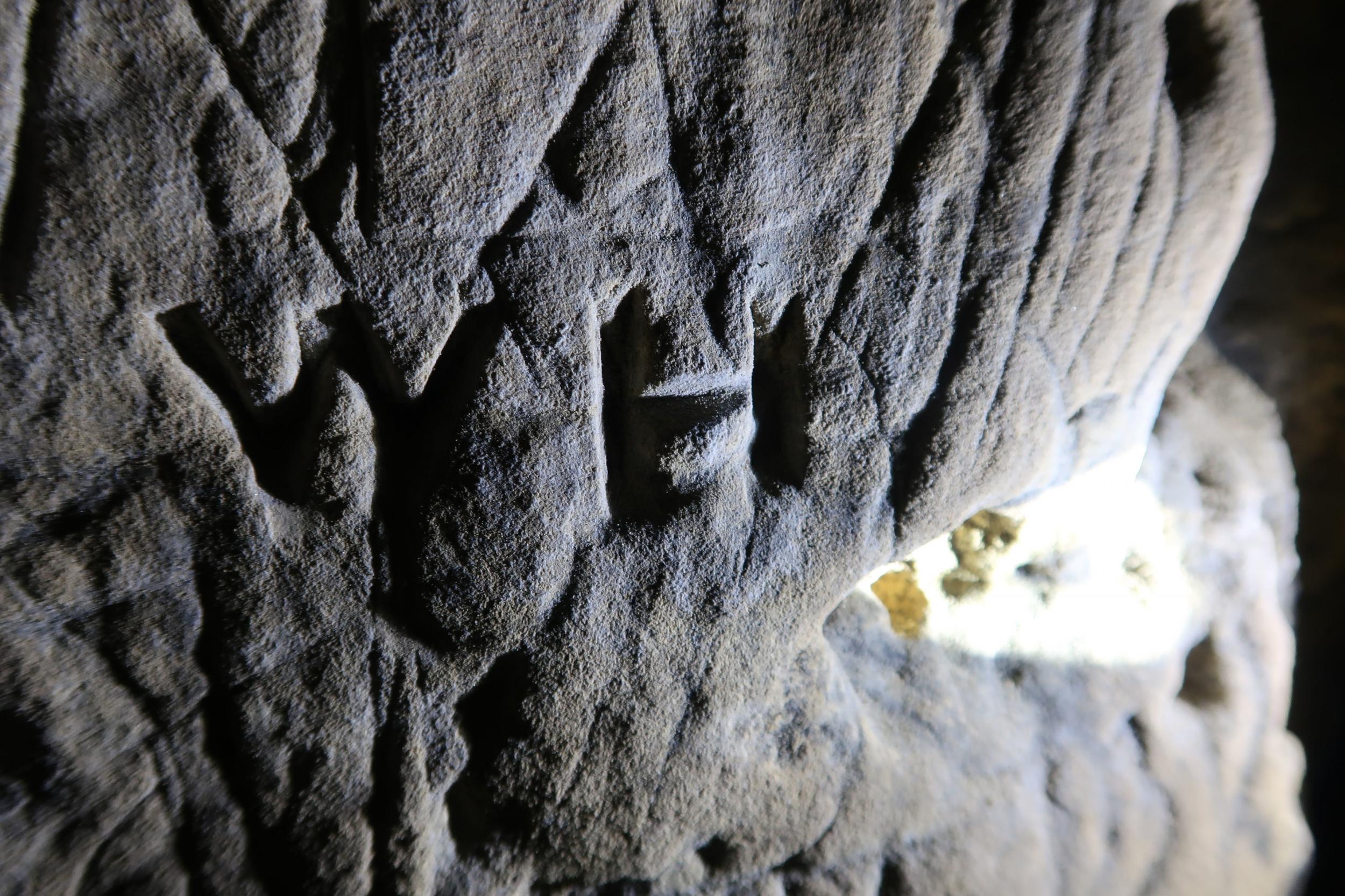'Gateway to Hell': Hundreds of historic anti-witch marks discovered in Nottinghamshire cave
Locals scrawled them there to protect against evil spirits coming up from underworld
Your support helps us to tell the story
From reproductive rights to climate change to Big Tech, The Independent is on the ground when the story is developing. Whether it's investigating the financials of Elon Musk's pro-Trump PAC or producing our latest documentary, 'The A Word', which shines a light on the American women fighting for reproductive rights, we know how important it is to parse out the facts from the messaging.
At such a critical moment in US history, we need reporters on the ground. Your donation allows us to keep sending journalists to speak to both sides of the story.
The Independent is trusted by Americans across the entire political spectrum. And unlike many other quality news outlets, we choose not to lock Americans out of our reporting and analysis with paywalls. We believe quality journalism should be available to everyone, paid for by those who can afford it.
Your support makes all the difference.The entrance to Hell may have been discovered – and it’s on the Nottinghamshire-Derbyshire border, it seems.
Hundreds of protective "witch marks" have been identified at a cave in the region’s prehistoric Creswell Crags gorge.
Experts say the scrawls – until recently thought to be graffiti – are actually the work of locals who once believed the ominous deep openings were a gateway to the underworld. The etchings were an apparent attempt to keep devils, witches and other evil occupants from spilling out.
“These marks were either to keep something in, or to keep something out,” said Paul Baker, director at Creswell Crags Museum and Heritage Centre. “I think over a period of time this hole was blamed or associated with a series of events, illnesses or crop failures to the point in which they hoped the marks would protect them. “
Ritualistic protection symbols are not uncommon in Britain. Most are found near the entrance points – including doorways, windows and fireplaces – of historic churches. Fifty-seven of them are scrawled at a cave in Somerset.
But the discovery at Creswell Crags makes it the largest number ever discovered at a single site in the UK.
“They clearly felt that whatever was inside it was so powerful that they had to keep going back to add more and more marks,” Mr Baker told The Daily Telegraph. “Just when you think Derbyshire can’t throw anything else at you, it gives you The Blair Witch Project.”
The identification itself was made by chance.
Hayley Clark and Ed Waters from the Subterranea Britannica caving group were taking a guided tour of the site’s Robin Hood Cave when they spotted the distinctive shape of many of the marks: two "V"s crossed.
This, they knew, represented the phrase “Virgin of Virgins”, a plea to Mary for help against evil spirits.
When other experts were called in to analyse the symbols, they found hundreds more on the walls, ceilings and crevices, including diagonal lines, boxes and mazes which were believed to be capable of capturing demons. “It was like something from 'The Shining',” said Mr Baker.
Although it is unclear when they all date from, it is thought they may stretch from the 14th century all the way through to the 18th century.

John Charlesworth, the tour leader at the time the marks were recognised, said: “People may have thought the big hole was some kind of door to the underworld of even a demon prison, but they were certainly worried about what was going to come out of it.
“You could think of the witch marks as worry lines that demonstrate the anxieties of the time. These marks are a kind of folk magic and the hole in the ground may have represented some kind of Pandora’s Box.
“These witches marks were in plain sight all the time. Being present at the moment their true significance was revealed will stay with me forever.”
Tours of the cave and new markings begin on Saturday.

Join our commenting forum
Join thought-provoking conversations, follow other Independent readers and see their replies
Comments